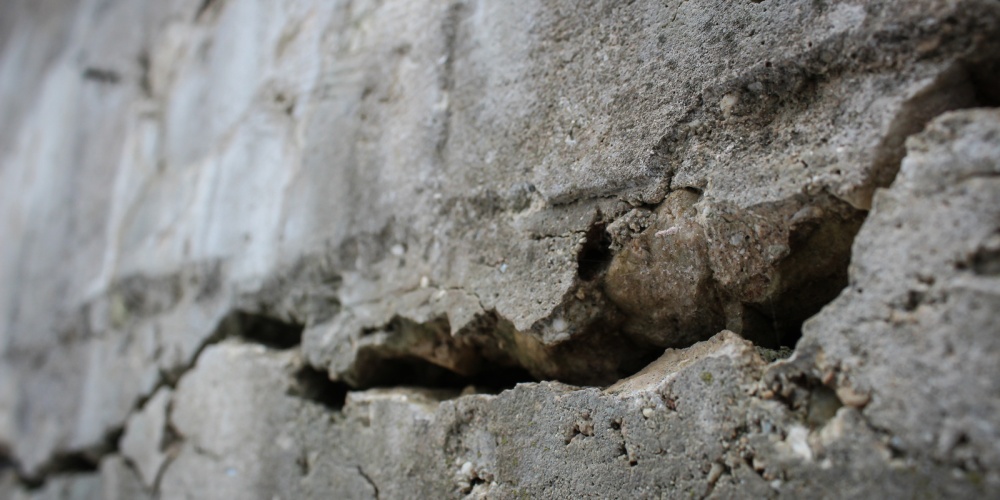
“At that time, the Lord said to me, ‘Hew for yourself two stone tablets like the first ones and come up to Me onto the mountain, and make for yourself a wooden ark. And I shall inscribe on the tablets the words that were upon the first tablets, אֲשֶׁ֣ר שִׁבַּ֑רְתָּ וְשַׂמְתָּ֖ם בָּֽאָרֽוֹן, which you shattered and you shall place them into the ark” (Devarim 10:2).
The plain meaning of the verse is that the rewritten luchot habrit were to be put in the aron kodesh, and with the building of the Temple they were to be placed in the Holy of Holies. Yet based on the juxtaposition of the “shattered luchot” and “place them in the ark”, Rav Yosef teaches “that [both] the tablets and the broken tablets were placed in the ark” (Menachot 99a).
The broken tablets were not simply discarded, but were placed in the aron as a constant reminder of the hard work necessary to ensure the Sinaitic covenant, and how easy it is to sin. They are there to tell us that we dare not break—either literally or metaphorically—this second set of tablets. Failure can and must be the catalyst for success. Those who never fail accomplish little, and hence, the broken tablets are the actual foundation for the second, much stronger set of tablets.
Reish Lakish thus notes that, “sometimes the nullification of Torah is its foundation, as it is written ‘that you broke’; congratulations that you broke it![1]” (Menachot 99b). Sometimes it is impossible to fix that which is broken; one must actually destroy it and build again from scratch, eradicating the mistakes of the past. With the Jewish people dancing around a golden calf, extreme measures were called for. Explaining what was done wrong would have had little impact, and Moshe had no choice but to destroy the Torah to ensure its ultimate survival.
However, our rabbis had little interest in knowing what actually happened to the broken pieces of luchot. Those shattered luchot were only fragments of carved stone; it is those who follow the Divine command who bring the Torah to life. It is people, not objects—holy as they may be—that interested the rabbis[2]. This is especially so when one considers that the Gemara was written hundreds of years after the destruction of the Temple and the ark, and its broken and unbroken tablets were nowhere to be found.
“From here [we learn that] a Torah scholar who forgot his learning due to misfortune must not be treated with disrespect” (Menachot 99a). We do not need the Talmud to teach us that one who through illness is now only a former Torah scholar is worthy of respect. Such is obvious. Rather, it seems that this passage is referring to a different, sadder situation.
It is tragic to witness the slow deterioration of a great person as their talents and abilities wane. It takes a great person to know when it is time to step aside. But sadly, many “fail” this test, hanging on longer than they should. Dealing with such situations—common when a long-serving leader has lost their touch—is never easy. But, however one may choose to handle the situation, one must continue to give great respect to this once-great person. That, too, is not easy. Even if such a person becomes a burden, we must never lose sight of their past accomplishments.
There may be no greater indignity, to the individual and to Torah itself, than allowing one who is no longer able—even through no fault of their own—to continue in their leadership role. We must be ready to take the “broken tablets" and place them in the aron, in the Holy of Holies, a place so holy that only the high priest can enter on the holiest day of the year, on Yom Kippur. Those Torah scholars who are no longer able to function are the most special of people, but they no longer should try and function in public where they may embarrass themselves and the Torah that they toiled so hard to master.
In this context, Reish Lakish’s teaching that, “at times, the nullification of Torah is its foundation” takes on an additional meaning. The loss of a functioning Torah scholar is a tremendous cause of bittul Torah, the nullification of Torah. But such bittul Torah is sometimes necessary for Torah to remain to remain relevant and vibrant. One has to know when it is time to pass the baton of Torah leadership to others[3].
Reish Lakish adds an additional, rather startling teaching based on the broken tablets. “A Torah scholar who sarach, went astray, one must not belittle him in public[4]”. One might have argued the exact opposite. Here we have a learned person, one who understands the notion of command, Commander, and sin, and yet has rejected it all. It is the reverse of what we call today a tinok shnishba, one who, having been brought up in a non-observant home, cannot be held responsible for not observing the laws of the Torah[5]. But how can we argue such regarding this individual? Yet Reish Lakish—who himself became observant only later in life—notes that such an approach is a misguided one.
Whether this was a pragmatic approach—belittling someone is unlikely to encourage them to return to a life of observance—or born of respect for his past learning matters little. While perhaps we need not “place them in the aron”, we may not discard them, either.
They remind us of the fragile nature of observance[6]; that throughout history, many great Torah scholars have left a life of observance. We can make fun of them, get angry at them and look down upon them. But that will accomplish nothing, perhaps even less than nothing. Rather, we should ask ourselves why they are leaving[7] and take their reasons to heart. We can then ask ourselves if we are modeling a lifestyle that will inspire others.
[1] This teaching is based on a play of the words asher shibarta, that you broke, and viyasher kochacha sheshibarta, your strength should increase for breaking it.
[2] Rava notes, “how foolish are those people who stand for a sefer Torah but do not stand for a Torah scholar” (Makkot 22b).
[3] This is not always a function of age. Even younger people can lose their ability to inspire others, unable to respond to the current needs of the people. It is then time to move on.
[4] Many of the commentaries understand the Gemara as referring not to a Torah scholar who was abandoned a Torah way of life, but of one who stumbles in a particular instance and sins—something every human being does. While this is possible, and may even have been the intent of Reish Lakish, the term sarach, as opposed to chatah, would seem to indicate a more complete notion of sinning. Furthermore, its placement in our context, following the teaching of Rav Yosef that the broken tablets are placed in the ark, would indicate that at least the editor of the Talmud understood this teaching as referring to a more all-encompassing sinner.
[5] It is very likely that in our times, where most people are non-observant; where G-d's presence is hidden and there are no overt miracles, even those who grow up observant and receive a serious Torah education yet are no longer observant, are also to be given the halachic status of a tinok shnishba. (See, for example, Chazon Ish, Yoreh Deah 2:16)
[6] Throughout our history many, and oftentimes most, Jews who were brought up observant left that world, and the number of those who returned could be counted on one hand. The State of Israel—and especially the Six-Day War—brought a major reversal of that trend, with most people remaining observant and many more becoming so. Nonetheless, the numbers of ba’alei teshuva pale in comparison even to those leaving, a trend that seems to be gaining even more steam today.
[7] For some preliminary research into why people leave observance, see here.



